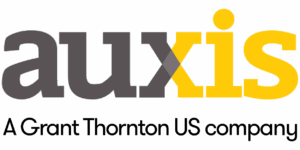Client Profile
Our client is a leading producer of automated test equipment and instrumentation software, with common applications including data acquisition, instrument control and machine vision. The company is publicly traded, with revenues of approximately $1.3B, and is headquartered in Texas.
Business Challenge
The company was interested in evaluating the effectiveness of robotics process automation (“RPA”) in order to gain more efficiency, performance and cost reduction in its operations. The starting point was the company’s back office operations, located in its nearshore shared services center, supporting the Americas. With no internal knowledge or expertise with RPA technology, the company engaged Auxis to review various process areas and identify several activities that could serve as a proof-of- concept of the benefits and capabilities of RPA.
Solution & Approach
Auxis first conducted a workshop with key process owners and subject matter experts to identify the best candidates for RPA implementation. The team reviewed various processes across multiple functions, looking for activities that had the characteristics of a good RPA candidate: high transaction volumes with low-to-medium levels of complexity and high degree of manual input required; well defined business rules, relatively stable systems environment with structured, digital data available.
After reviewing a wide range of processes, ultimately selecting four activities for a more detailed operational assessment:
- Supplier Set Up, the process to set up new suppliers in the company’s ERP system
- Supplier RFQ, the request for quotations for pre-approved suppliers
- Web Orders, resolving issues with customer orders placed via the company’s website
- Level 1 Customer Quotations, the generation of customer quotations based on information typically received via email
Then, using our proprietary RPA Assessment methodology, Auxis performed a rapid, but detailed review of each process in order to quantify the current operational performance metrics (transaction volumes, cycle times, FTE’s assigned, cost to serve, etc.), and then assess the impact of RPA to the various processes.
The goal was to identify the process with the “biggest bang for the buck,” determining where RPA would provide the biggest benefit in terms of process efficiency, cost savings and ROI. This process would serve as the Proof-of-Concept for RPA.
Results
Auxis determined that the Level 1 Quotes Process was the best candidate for RPA. The company received approximately 8,000 requests for quote per month, with about 55% of these being considered “Level 1 Quotes.” A Level 1 Quote meant that the customer provided all of the needed data in order to generate the quote, and the processor was able to input the data and generate the quote without delay. If further research was required, the quote request would be transferred to the Level 2 Quote team, who would perform the research needed to complete and generate the quote. In all, the department had 15 people assigned to these various tasks, with approximately 7.5 FTEs focusing on Level 1 Quotes. Each Level 1 Quote transaction required about 10 minutes to complete.
Auxis designed an RPA process that provided a 70% efficiency gain for this process, reducing cycle times from 10 minutes down to 3. Cost efficiencies of 87% were identified, as the process was restructured to have it fully automated, with one person remaining to oversee the operation of the robot.
Auxis further identified that if you leveraged the robotic process to generate the Level 2 quotes once the research was completed (thereby converting the quote to a Level 1), an additional 43% staff reduction could be achieved. This provided overall faster turnaround times on quotations, with the added benefit of allowing the Customer Quotes team to spend more time focusing on customer needs and requests.
The payback period on this process was less than two months.
Auxis further provided insight into the RPA operational structure, including recommendations on tools, governance, and the establishment of a center of excellence.
Based on the results of the Auxis RPA Assessment, the company decided to conduct a broader, more comprehensive assessment of RPA opportunities across its global operations, with a goal of implementing RPA in multiple locations and business functions.
